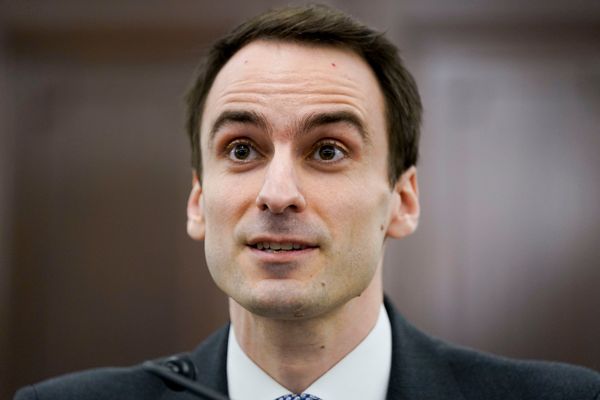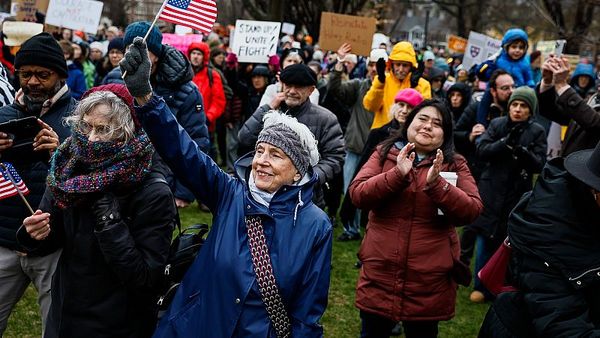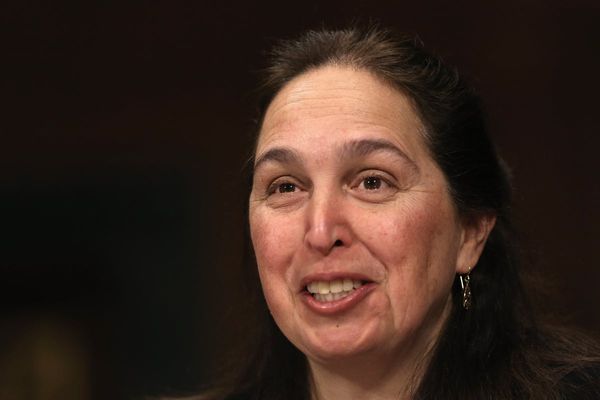
US president Donald Trump has threatened “reciprocal tariffs” on US trade partners in retaliation for some domestic taxes, such as value-added taxes, sparking concerns Australia could be targeted.
Trump on Thursday directed federal agencies to look at trade barriers, including VATs among a list of “unfair” taxes on US goods.
But economists have argued Australia’s value-added tax – the goods and services tax, which is applied to imported and domestically sourced goods and services identically – is not protectionist and so could escape retaliation from the US.
Trump has also said his new trade regime would be based on “fairness and balance”, and Australia – which runs a trade deficit with the US – has been making the case for exemption from a tariff regime, arguing free trade with Australia is in American interests.
In a post to Truth Social, Trump said the US had one of the most open economies in the world, imposing fewer barriers to imports than its trading partners.
“For many years, the United States has been treated unfairly by trading partners, both friend and foe. This lack of reciprocity is one source of our country’s large and persistent annual trade deficit in goods – closed markets abroad reduce United States exports and open markets at home result in significant imports.”
Trump said his new plan would be “comprehensive” and would include reciprocal tariffs for “unfair, discriminatory, or extraterritorial taxes imposed by our trading partners … including a value-added tax”.
AMP’s chief economist, Shane Oliver, argued Australia’s 10% GST is “not protectionist in any way” but Australia could still be “caught up”.
“We may get caught up in Trump’s reciprocal tariffs if he deems our GST protectionist. It’s not, because the 10% rate applies to imports and local goods and services alike but it sounds like Trump may not see it that way.”
Oliver said there was positive news in the White House saying it would first impose reciprocal tariffs on countries with which it has the highest trade deficits, meaning Australia – with a trade surplus – would be at the back of the queue.
ING bank’s senior economist, Inga Fechner, said that while the Trump team were scrutinising the VAT system and viewing it as a tariff, it was unlikely countries could alter or abolish VAT systems in response.
“Countries could, in principle, lower their tariffs to US levels. However, abolishing the VAT system is extremely unlikely. In the EU, VAT revenues account for 7.5% of GDP and 18.6% of total tax revenues,” Fechner said.
In Australia, states and territories receive GST revenue, which makes up about 23% of their income.
“Globally, 175 countries have a VAT system, with the US being one of the few exceptions, using a sales tax system by state varying from 0% to 11.5%, instead. Since VAT is typically applied as a destination-based tax, meaning it is charged based on where the goods or services are consumed rather than where they are produced, it aligns with WTO principles,” Fechner said.
Additional uncertainty remains over whether Australia will be exempted from the Trump administration’s new 25% tariff on steel and aluminium imports.
Trump signed an executive order imposing the tariffs on Monday, saying they would be implemented in March with “no exemptions, no exceptions”.
Within hours, he then said he was giving “great consideration” to carving Australia out of the tariff regime, with Australian ministers and officials since making the case in Washington for reprieve.
Australia was granted an exemption from similar tariffs during Trump’s first term in office, and a similar deal in this term could boost the domestic construction sector.
A carve-out specific to Australia would lead other major economies, particularly in Asia, to send steel to Australia instead, lowering domestic prices, the Australia Steel Association’s chief executive, David Buchanan, told AAP.
Sectors such as housing could benefit from lower costs and greater imports.
“We may see some improvements of the price of steel coming this way, and that’s good for construction and manufacturing in Australia, which we know is under pressure,” Buchanan said.
“If Japan, Korea and Vietnam have issues exporting to the US, they may focus back towards Australia and we may see increased attention from those countries.”
In turn, cheaper steel could make a difference in the construction of apartments, the Housing Industry Association’s chief economist, Tim Reardon, said.
“Steel is not a big issue in detached houses, but steel is a significant cost to apartment buildings,” he said.
“Certainly lower steel prices have a tangible impact in reducing the cost of apartment construction … we’re producing half the number of apartments we were a decade ago.”
Anthony Albanese was spruiking the domestic steel industry during a visit to a steelworks in Illawarra this week, arguing the trade surplus between the US and Australia would strengthen Australia’s case to be exempted from Trump’s latest round of tariffs.
“It is in Australia and the United States’ interests for us to have free and fair trade between our two countries,” the prime minister said.
“Australian steel and aluminium has contributed to the United States economy, contributed constructively, and our economic relationship is very important.”
Australian steel powers American jobs. @BlueScope employs nearly 5000 Americans across 16 states. Over 30 years, the Australian-owned company has directly invested $5 billion into the US economy with more to come.
— Kevin Rudd AC (@AmboRudd) February 14, 2025
Here in Jackson, Tennessee I met hard-working locals who… pic.twitter.com/3nGnwenJtV
The Australian ambassador to the US, Kevin Rudd, was also pushing the case for an Australian exemption during a visit to a Bluescope plant in Tennessee.
“Australian steel powers American jobs…. Good for America. Good for Australia.”
with AAP







